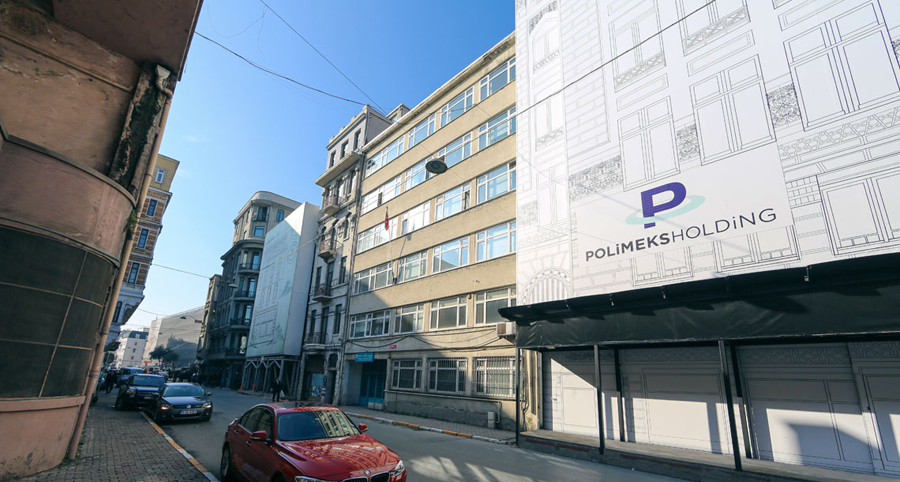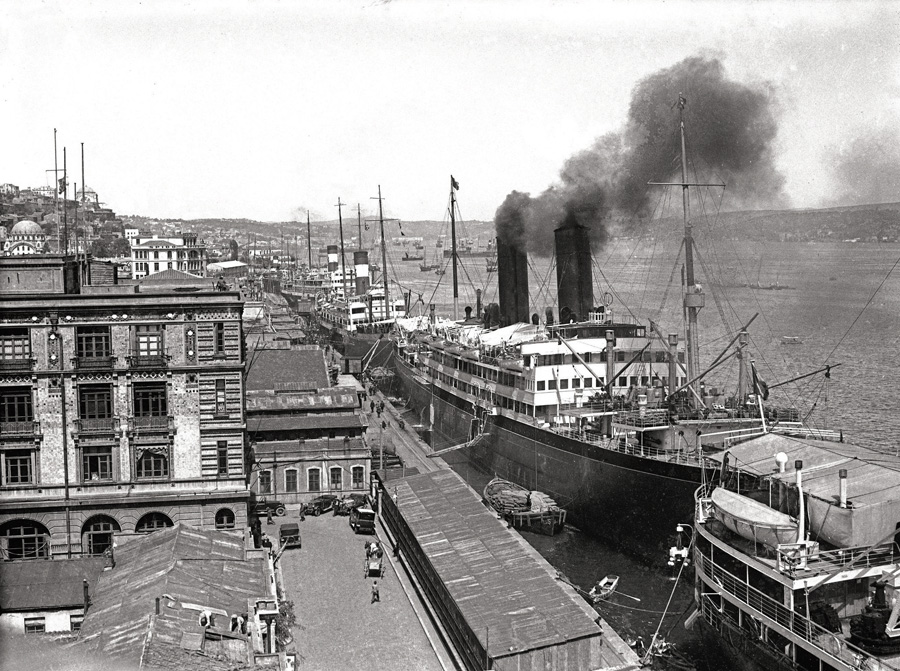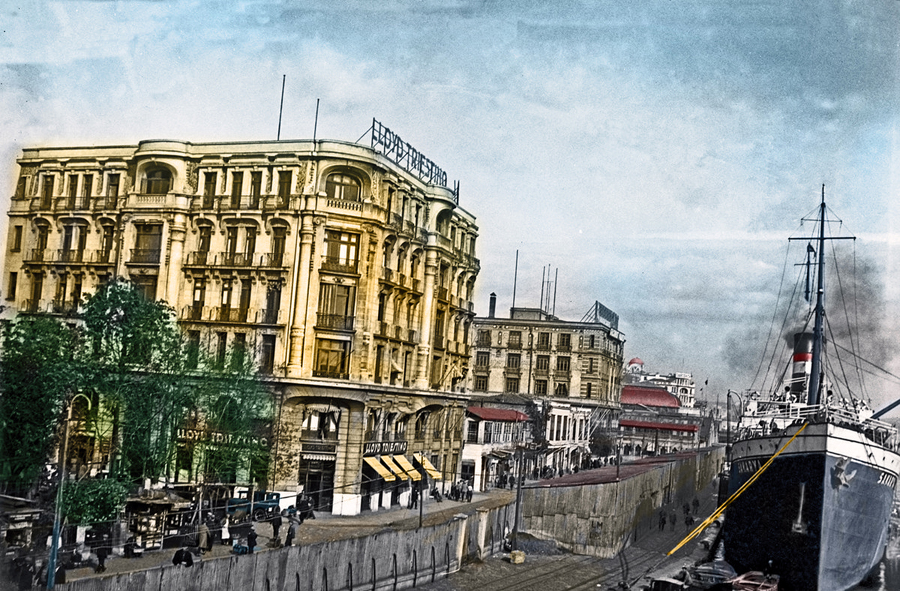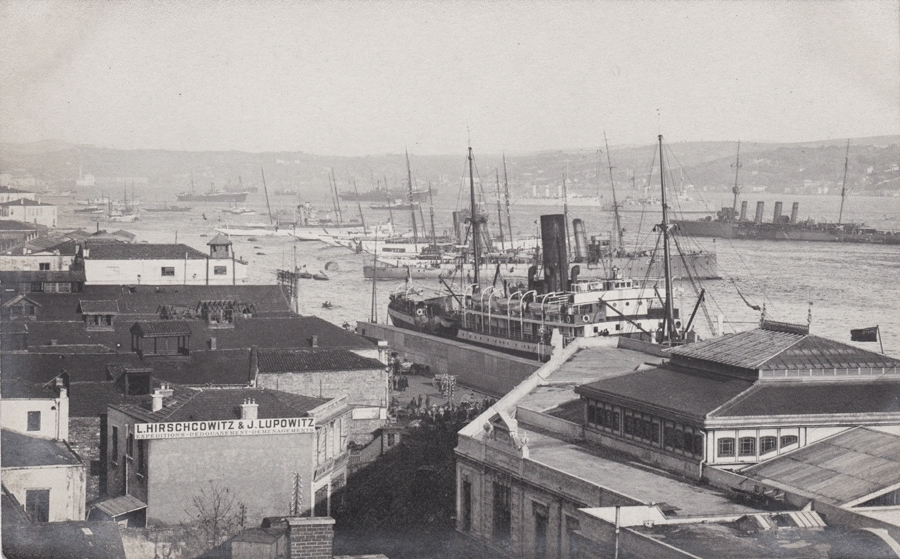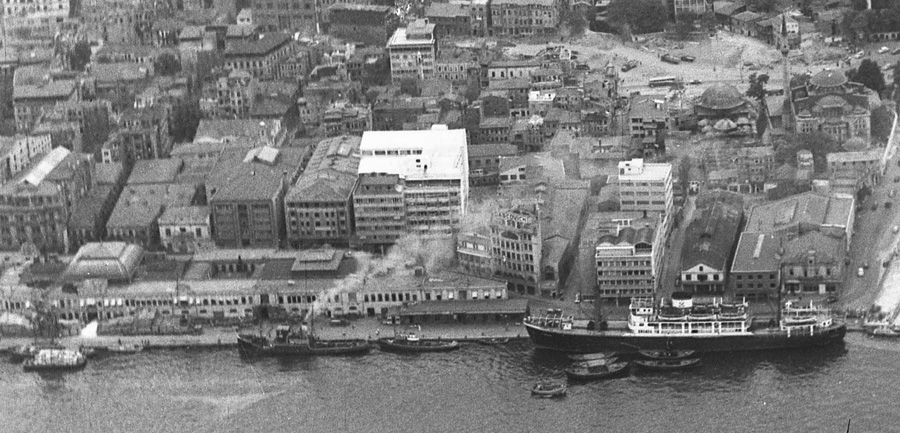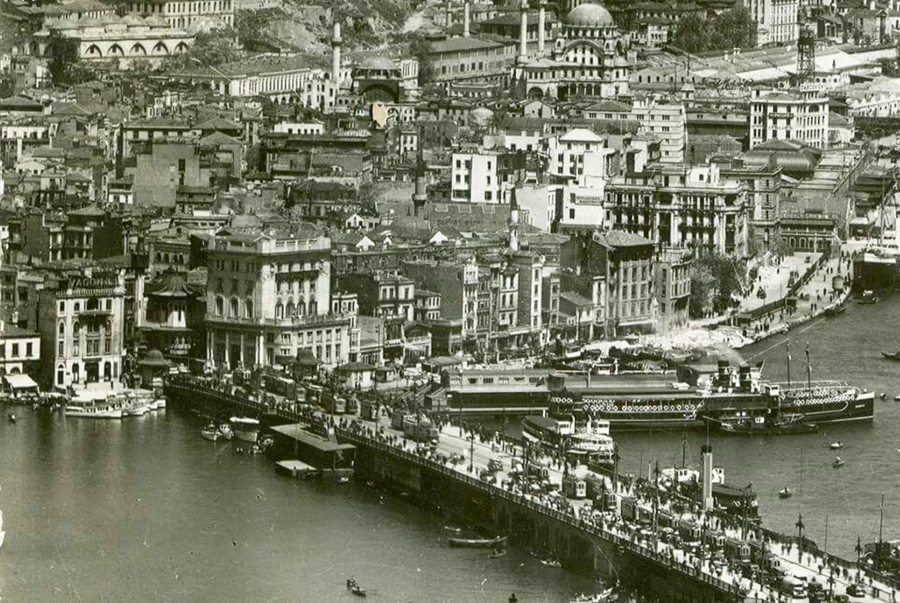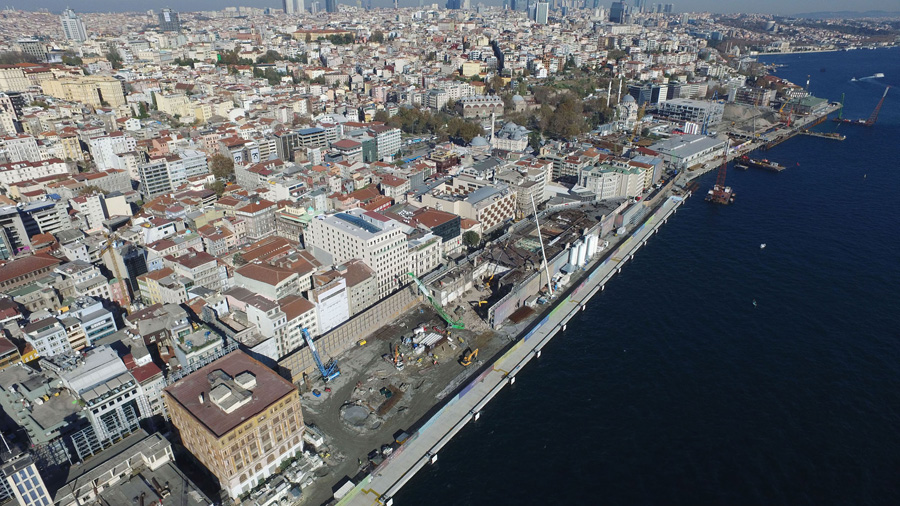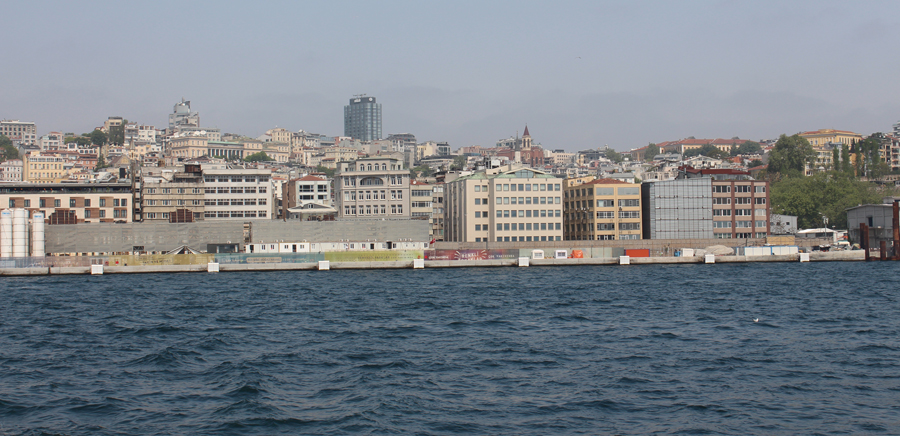
Ephemera
Frank Han of Galata
The port of Galata (Karaköy) has always been the chief passenger and to a lesser extent goods entry-exit point for the Istanbul. Recently the port facilities have been undergoing a major renevation for cruise only passengers and the project like many recent infrastructure projects in the city has had its fair share of controversies and question marks.
Galata has also been the first stepping off point for foreigners and Levantines for centuries and many of the shipping agencies and import-export companies have naturally been situated close to this important water-front. Now there are only a handful of shipping agencies still remaining here and the focus for good traffic is purely on the Asian shore of the city with the expanded facilities beyond Haydarpaşa.
Frank han has been the building in which many shipping companies and foreign company representatives have been based since it was built in the 1930s. The companies based here include Dabcovich, Spido and Foscolo-Mango, all shipping agencies. The last of the companies to occupy this zone, Dabcovich, displayed its large board at the top of this building till the 1980s.
Frank Han visible in the distance with the Spido board clearly visible. From the motor vehicles visible it is clear the photo is from the 1930s, but before 1937 when the large cruise passenger processing building was erected along the shoreline. Photo taken from the top of Lloyd Triestino building (later Turkish Maritime Lines headquarters) near Galata Bridge - seen on the 1905 Charles Goad map for this zone (no: 29).
A rare colour photo of the same pier from the 1930s showing the rudimentary dock facilities, the imposing building which was one of the biggest shipping lines of the Mediterranean of the time. This building was for a long time known as Rıhtım [Dockside] Han and was until around a decade ago the headquarters of the National Maritime Lines. It has since been privatised, sold and is now undergoing conversion to a luxury hotel. The large building further along the frontage is Çinili [Tiled] Han, that has also recently been sold by the state and is now being converted to another luxury hotel. This Han was built in 1910 by a consortium ‘Dersaadet Rıhtım Dok ve Antrepo’ company. To provide the story to that, we need to back in time over half a century:
During the Crimean War the British and French Allies experienced great delays in loading and unloading their supply ships and at the peace conference of 1856 pressured the Ottoman Government to construct proper docks. However it was not until 1879 that the contract for the construction of these docks was given to two Frenchmen, Marius Michel (Comte de Pierredon, later known as Michel Pasha, a naval officer who had ended up in Constantinople after being shipwrecked in the eastern Mediterranean) and Bernard Camille Collas (his book on Turkey, 1861), both of whom had been building, inspecting and repairing lighthouses on the Black Sea and Aegean coasts. Their initial plan was to build a quay with landfill and wooden paling but it soon became clear that because of the strong currents and nature of the shore (in some places a sheer drop just offshore of 35 m. and other sections dense clay that resisted paling) this would not be possible. They also realised that they did not have enough capital to build a stone quay, so in 1890 asked for and were granted an extension and set about trying to establish a company to finance this project. Then in 1891 Michel Pasha and Monseiur Collas turned over their contract to the newly formed and French owned Dersaadet Rıhtım Dok ve Antrepo Şirket-i Osmaniyesi [Ottoman Pier, Warf and Warehousing Company of Constantinople], which had a capital of 23 million gold francs. Michel Pasha remained as the director of the company, and Monsieur Collas used his share of the proceeds to buy the Jerusalem to Jaffa railway. In exchange for building the docks, warehouses and administrative buildings, the company was granted the rights to charge docking and warehousing fees.
Construction of the 758 m. quay from Karaköy to Tophane began in April 1892 and proceeded slowly. Huge blocks of stone had to be quarried on Marmara islands and Black Sea coast and transported by mavna (a Blacksea type of midsized cargo vessel) and as there was a shortage of skilled labour, foreign workers and foremen had to be brought in from Malta and elsewhere. Work was frequently interrupted by acts of sabotage, obstruction and violence carried out by the sandalcıs, kayıkçıs [large and small rowboat owners] and mavnacıs who feared that the new quay threatened their livelihood and in addition there were several outbreaks of cholera among the workers. Meanwhile the port continued to operate and progress was thus hampered by the constant loading and unloading of ships. The quay was nearly completed when the foundations were damaged by the earthquake of 1894 which also killed a number of workers.I In September 1895 the Memphis of the Messageries Maritime Lines became the first passanger ship to dock at the new quay. A group of angry sandalcıs, kayıkçıs tried to prevent the ship from docking and succeeded for several hours until soldiers arrived and fired shots into the air to disperse them.
Meanwhile, a series of intrigues involving the agents of the company, several pashas in the govenment and a group of Armenian businessmen, and accusations that the French company was unfairly preventing Turkish ships from docking led Michel Pasha to decide to abandon his responsibilities and the company was taken over by the Ottoman Bank. Michel Pasha returned to France where he began building a modern tourist resort though it remained unfinished after his wife was stabbed to death by a mad man.
Over the years the docks of Galata saw several great migrations. At the beginning of WWI when the young French Levantines of the city were boarding the Memphis to enlist in France for what they thought would be a short war, a large crowd came to see them off and a popular singer at the time, Henriette Leblond stood on top of a barrel and led the rousing rendition of the Marseillaise. A few years later the ships carrying the White Russians fleeing the Bolshevik Revolution and who were to have such an impact on the social life of Pera Beyoğlu docked here. A few years later when the Republican Turkish forces retook Istanbul in 1922/23 as many as 50,000 local Greeks as well as thousands of Armenians, Jews and Levantines who had publicly supported the occupation boarded ships in fear of retaliation. Many of the Russian refugees left with them seeking better opportunities in Europe and America. Between 1948 and 1952 many of the city’s Jews embarked here for the newly established state of Israel.
A 1913 dated document of the Lloyd Triestino building details amongst this building’s occupants were two maritime agencies, one coal company, Belgian port representative, local representative of the following insurance companies: Rossia, Liverpool & London, Globe, the Russian postal service and a cement company representative. Frank Han (real name Frankyan, the name of the landowner who was Armenian) is visible in the distance. The passenger ship ‘Sakarya’ docked was later to sink in the southern Aegean in 1943 after hitting a sand-bank.
Image copyrighted by Osman Öndeş - partion of the above information derived from the book Galata, Pera, Beyoğlu: A Biography, Brendan and John Freely.
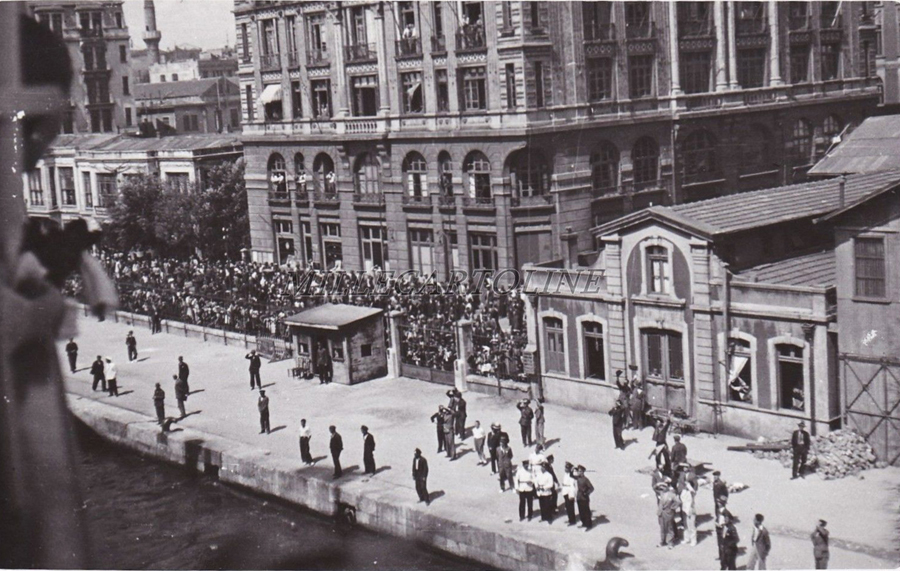
Çinili Han in former times. This building housed many of the shipping companies and agencies such as Adrias Navigation Company, Byron Steamship Company (agent Mr Siskides), Ellerman Ltd (agent James Richard La Fontaine), Ellerman Wilson Company, Papayani Line, Gilchrist Walker company etc.
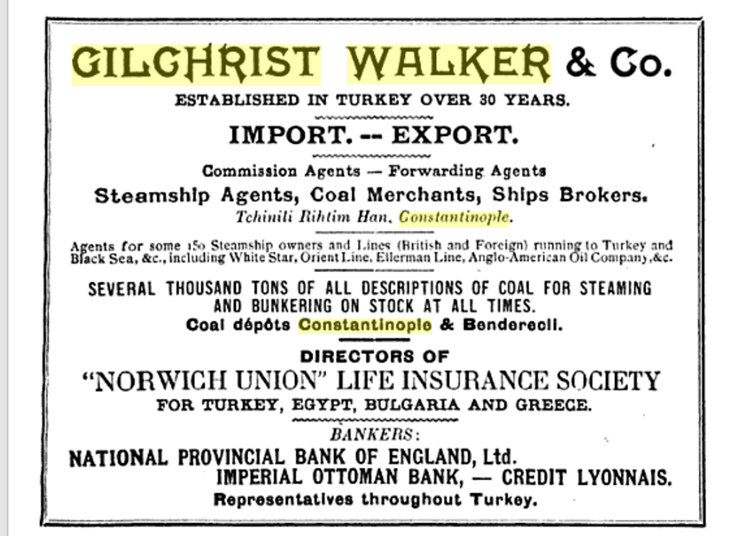
One of the former occupants of this building was the long-lived Gilchrist Walker & Co. Shipping agency. The oil depot for this company and others such as Foscolo Mango, Austrian Lloyd etc. were on the opposite bank and upstream of the Golden Horn as seen in the 1914 Goad map:
The location of Frank Han before its construction, probably taken during the occupation period as there are what look like Allied warships off-shore (1919-23 - additional photos 1 & 2 taken from the same vantage). The modest building served as the offices of a partnership by the name of L. Hirschcowitz & J. Lupowitz whose sign in French indicated they were a port servicing company: ‘Forwarding, customs clearance, removals’ and the Cervati Annuaire oriental almanac of 1914 indicates that Leon Hirschovitz’s office address was Rue des quais and his home address Djerab pacha sokak appat. Hamid Bey N°8. Information from the 1921 trade directory informs us that this partnership (L. Hirschowitz & I. Lupowitz) was dissolved before that date, so the photo will be from earlier years and Frank Han which replaced the building in the photo was constructed sometime between 1922 and 1927. Trade directories also reveal that in 1922 Hirschowitz moved Hudavendighiar Han in Galata. From information received from Osman Öndeş: L. Hirschowitz was a Jew whose family had migrated from Romania. Later Mr Hirschowitz emigrated to Israel and there established the Hirschowitz Shipping Agency at the ports of Haifa and Ashdod. In Frank Han above the floor of the Dabcovich offices was the Romanian state shipping Romtrans whose representative was a Mr ‘Lupen’ who was also a Romanian Jew, a shortened version of Lupowitz and possibly the same man from the partnership. He also later emigrated to Israel.
Aerial view of the zone with the Dabcovich sign clearly visible. The passenger port building now stands. The Charles Goad map of 1905 (no: 30) shows this building and many around to be post this date when the zone was mostly warehouses for olive oil, tobacco etc. This building is shown in the 1948 Suat Nirven map built in the space between the segments of ‘Tahir Han’ and the earlier Jacques Pervititch) map published for this zone in 1927. This would date the construction of tbe building sometime between 1905 and 1928. The original owner of the building was an Armenian businessman (importing rifles, guns etc.) Mgrdich Frenkyan, and so the name of the building appears to be a future shortening of his last name (also referred to as Frenkyan han, as in this archive almanac of Hans). Newspaper archives show he died in 1939.
The top part of this picture seems to show road widening project ongoing, dating it to the late 1950s. The building on the extreme left with the long triangular roof structure is Veli Alemdar Han, that housed foreign shipping agencies such as Transbosphore, Near East Shipping Company etc. The building is currently being converted to a luxury hotel. The major building to the right of this with a small white structure on the roof was Kozluca Han that served for a time as the Istanbul Vakıf [Buildings foundation] headquarters and was also the second location of the Turkish Shipping Chamber in 1939. This building has been demolished and now has a smart hotel in its place. The next set of buildings (including with the large white roof) are probably scheduled for demolition probably for new hotels again. Beyond Frank Han, amongs the occupants of the building with the 3 semi-circular roofs, the Greeks Niko Palavidis and Kosta Sachoneff ran the Şark (Eastern) Shipping Agency. The buildings to the extreme right of this picture along the shore (Zihni Han etc.) have long-since disappeared and in all probability will also become the site of hotels as part of the Galataport project.
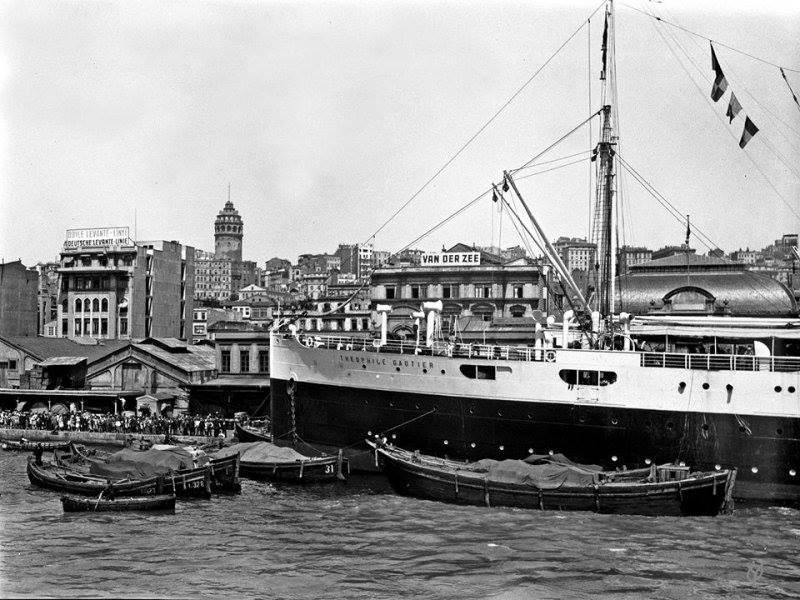
Veli Alemdar Han in the centre housing the Van Der Zee shipping line offices possibly late 1930s. On the right building housing the Deutsche Levant Linie shippiing agency was housed in the Hovagimyan Han. The ship in the foreground seems to be the French passenger ship Théophile Gautier, that was tragically sunk during the Second World War, October 1941.
A 1930s aerial shot from the Golden Horn shows Frank Han in the distance and the Ford Assembly Works beyond.
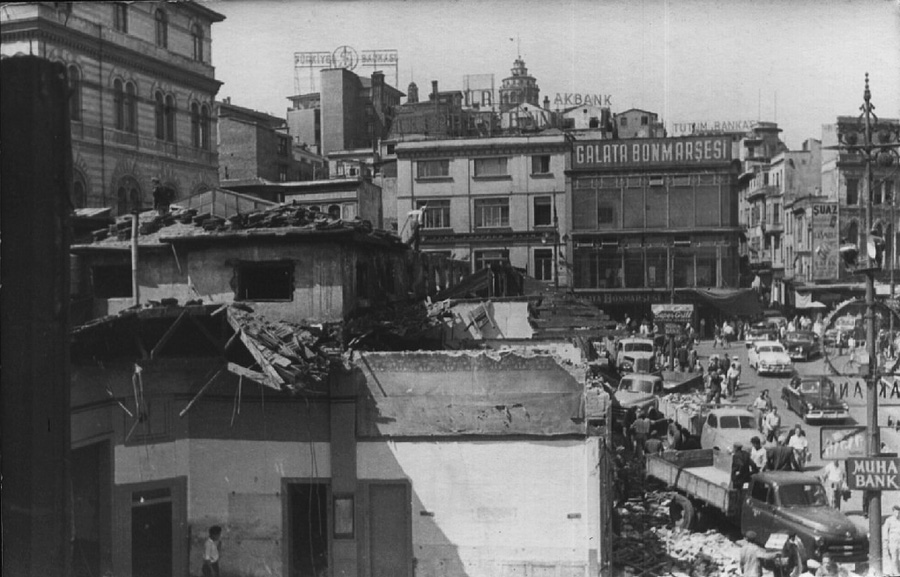
The zone where the road connects to the Galata Bridge was widened in 1958 as seen, and many prominent buildings were lost (including the small mosque by Raimondo d’Aranco - more images) but the building on the left, the former Nordstein (German insurance company) building (possibly by the Italian architect Guilio Mongeri) survived this demolition and today serves as a luxury hotel.
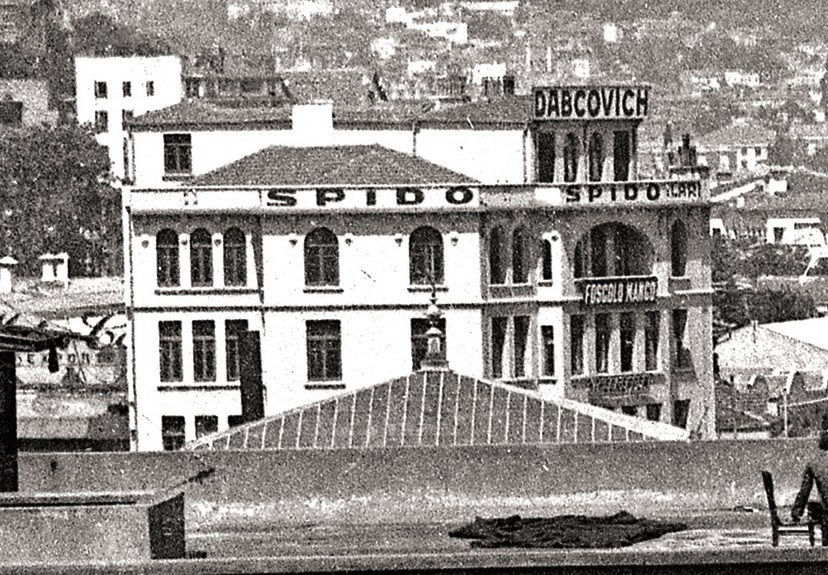
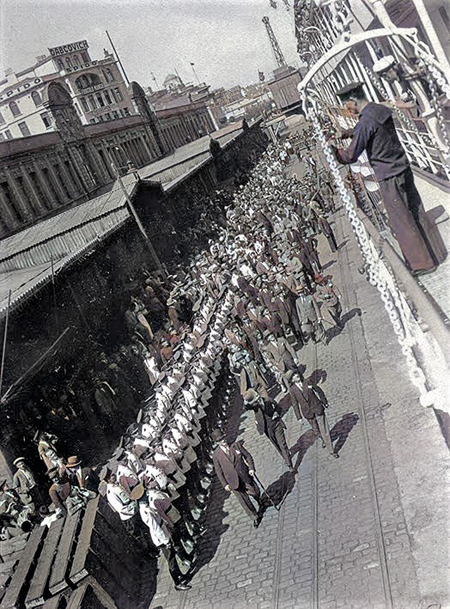
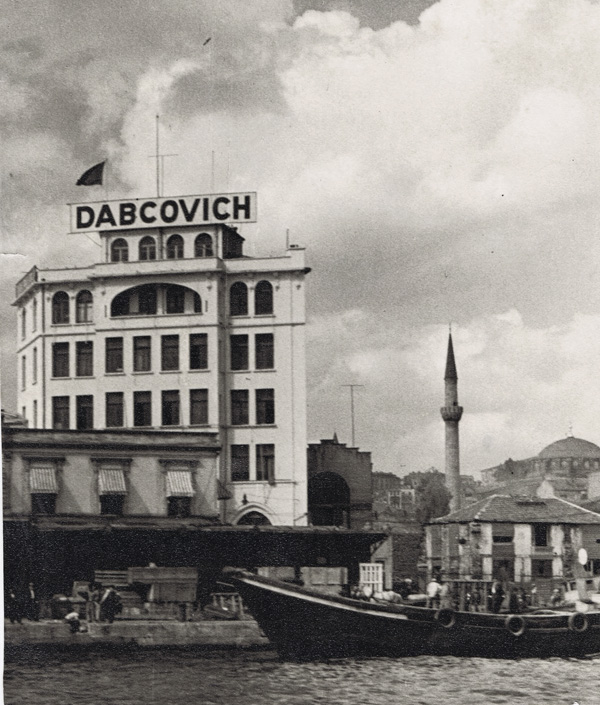
Frank Han from an earlier and later time showing Dabcovich as the the company still displaying its name.
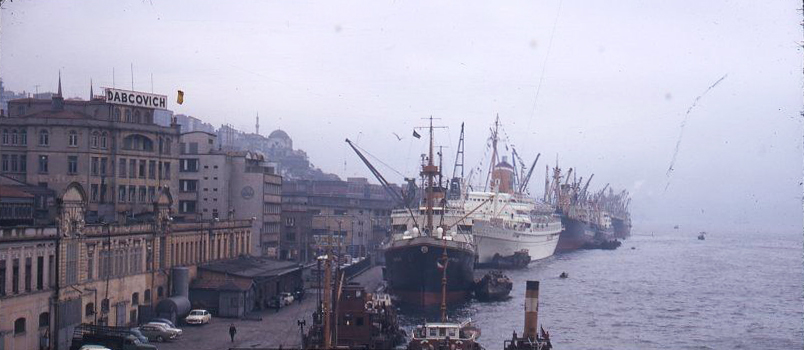
The building and pier as seen in 1970.
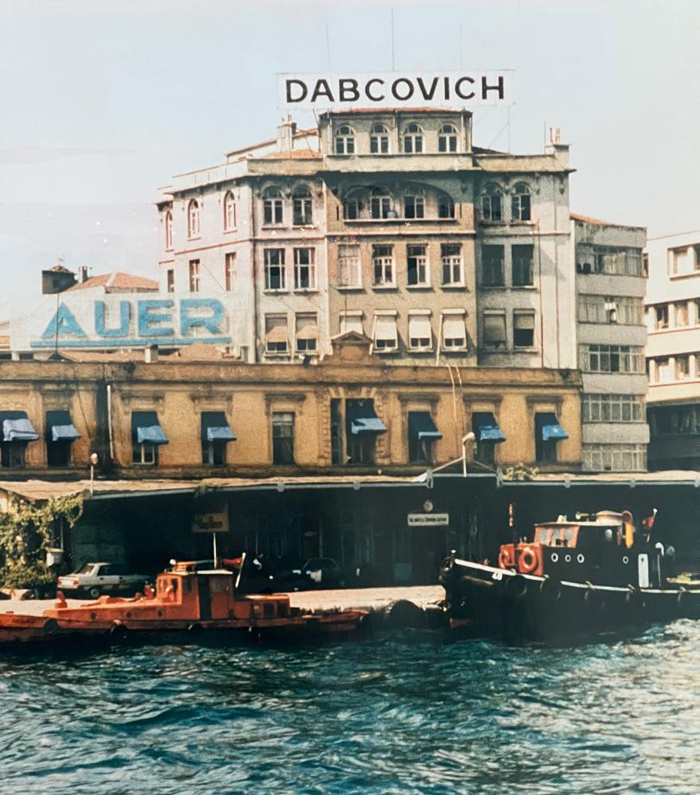
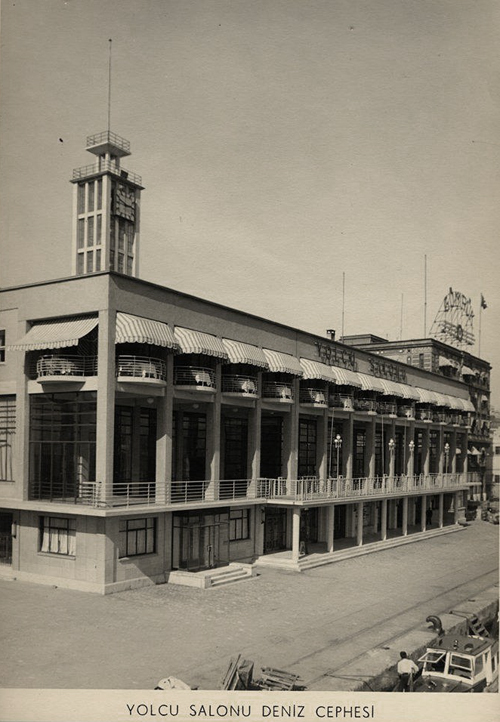
The former modernistic cruise passanger building built in 1940 by the French architect George Debes and Turkish Rebii Gorbon - alternative views, 2, 3, 4.
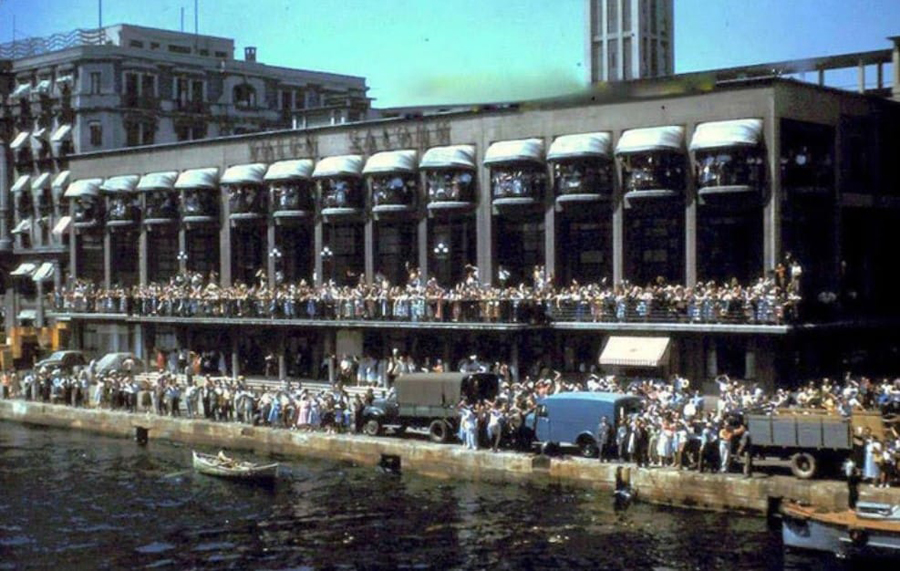
Crowds in front of the cruise passanger building in 1954 welcoming the returning veterans of the Korean War.
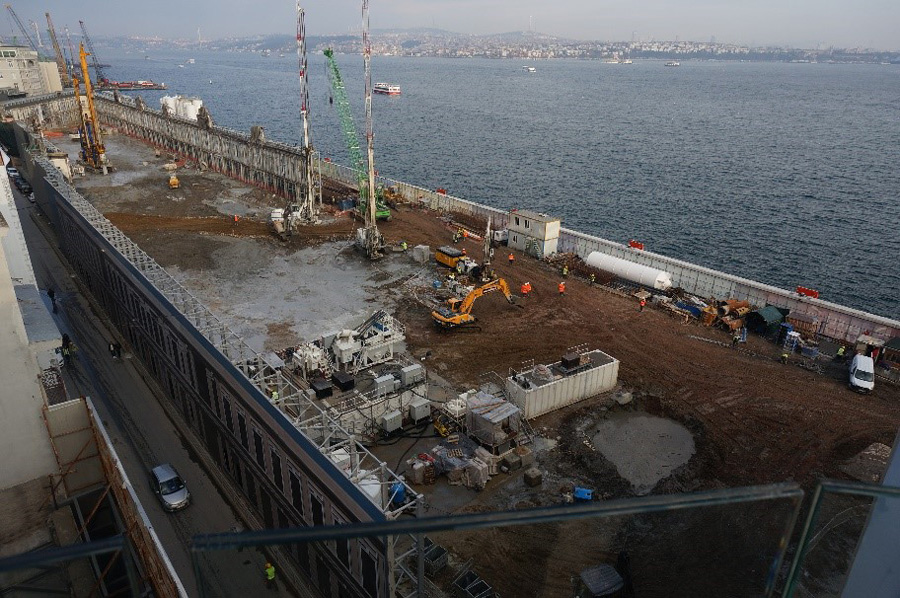
The shell of the former cruise passenger building as seen in March 2017, where the external walls are retained but the interior totally remodelled as part of the Galataport project - the interior demolition took place mid February 2017. Frank Han is visible just to the left of this construction and it is itself undergoing renovation, destined to become a hotel.
Çinili Han seen to the left is almost the only former shore-front building that has been spared this development.
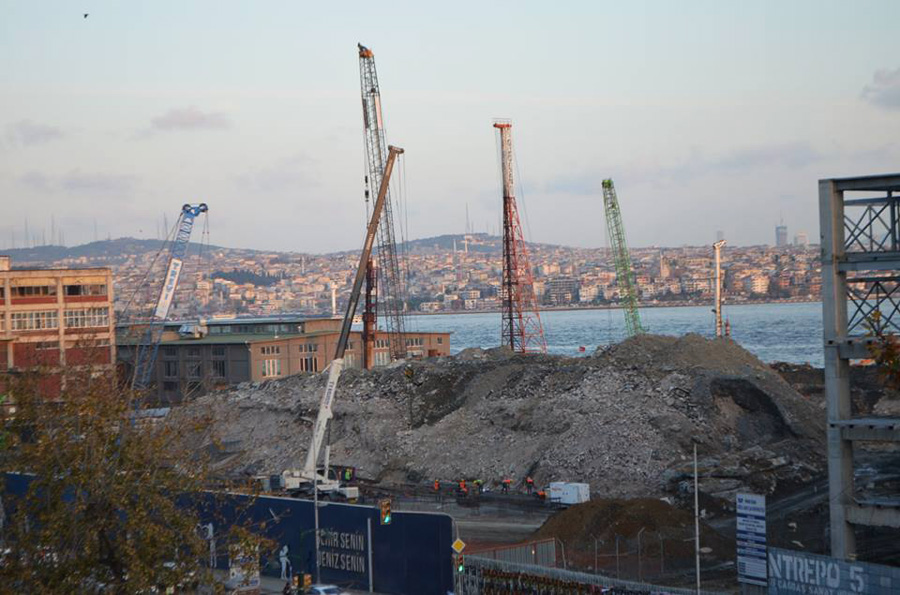
The pile of rubble at the far end of the project area from the destroyed passanger building etc. as seen December 2016. The slogan on the barrier reads ‘The city is yours, the sea is yours’, which seems quite ironic.
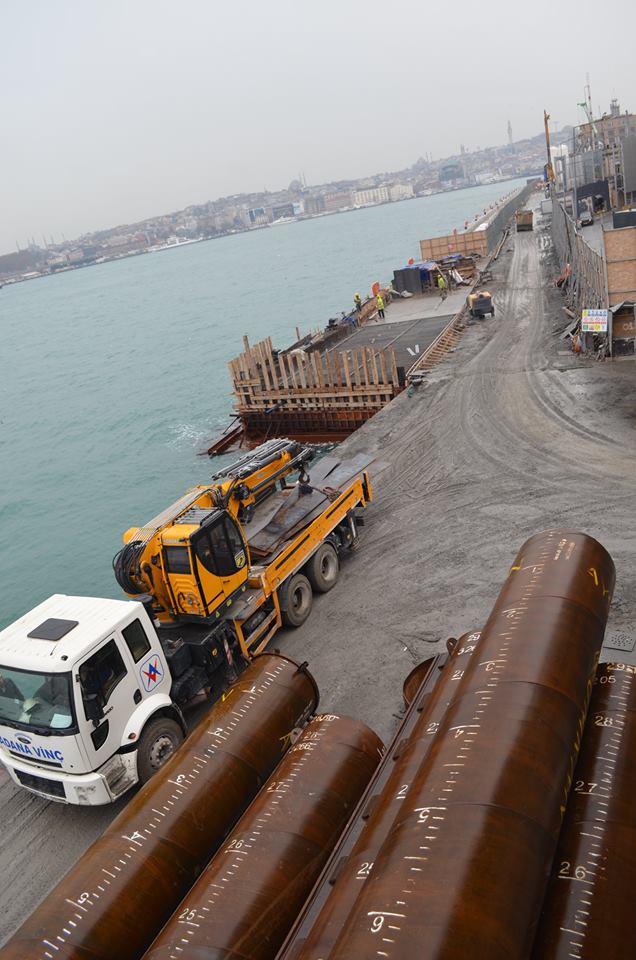
The infill zone and the wide steel pipes used as shore defenses, piled to the seabed, as seen December 2016.
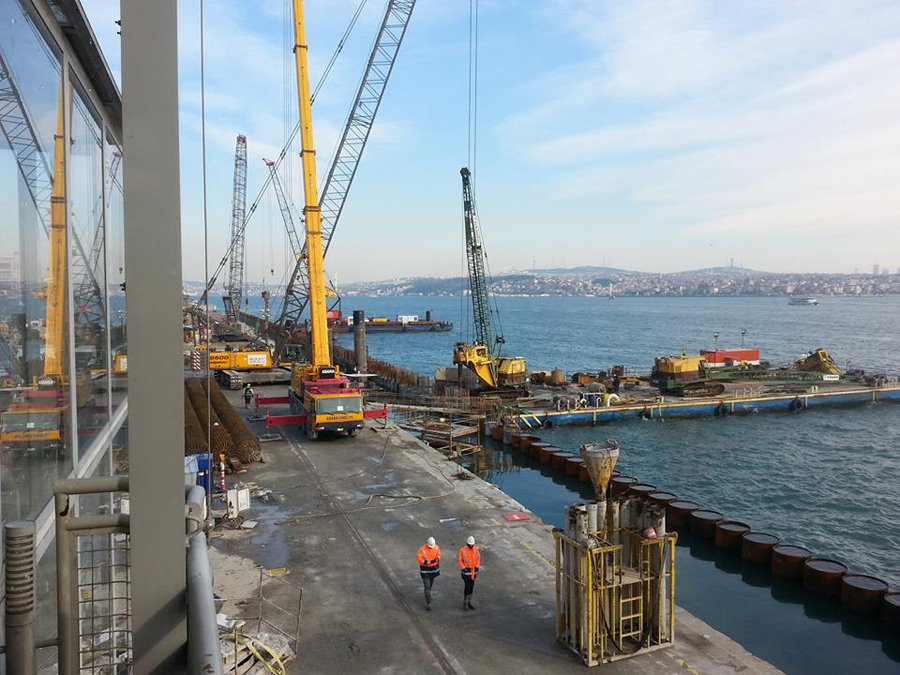
The situation along the shore November 2017 with construction of the new structures of Galataport with around 10 m of sea taken over with a new breakwater with infill as seen. There appears to be no attempt in architectural harmonisation with the existing buildings on the landward side of this quarter. A considerable amount of excavation is ongoing for the planned 2 storied under-ground car-park with little or no archaeological consideration of what might be hidden in this historic area.
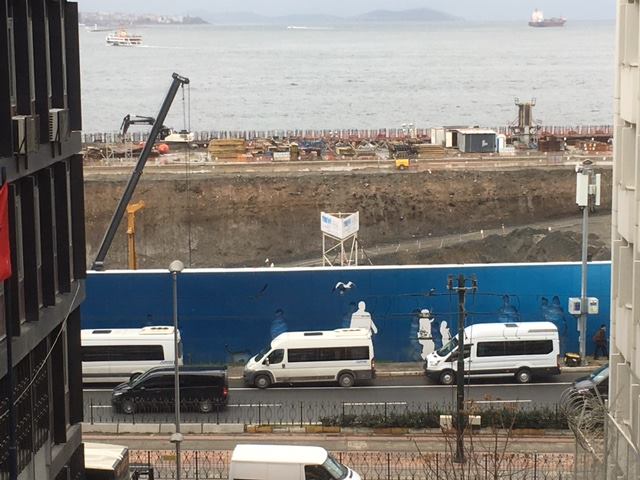
Frank Han and surroundings viewed from the sea, May 2018.
